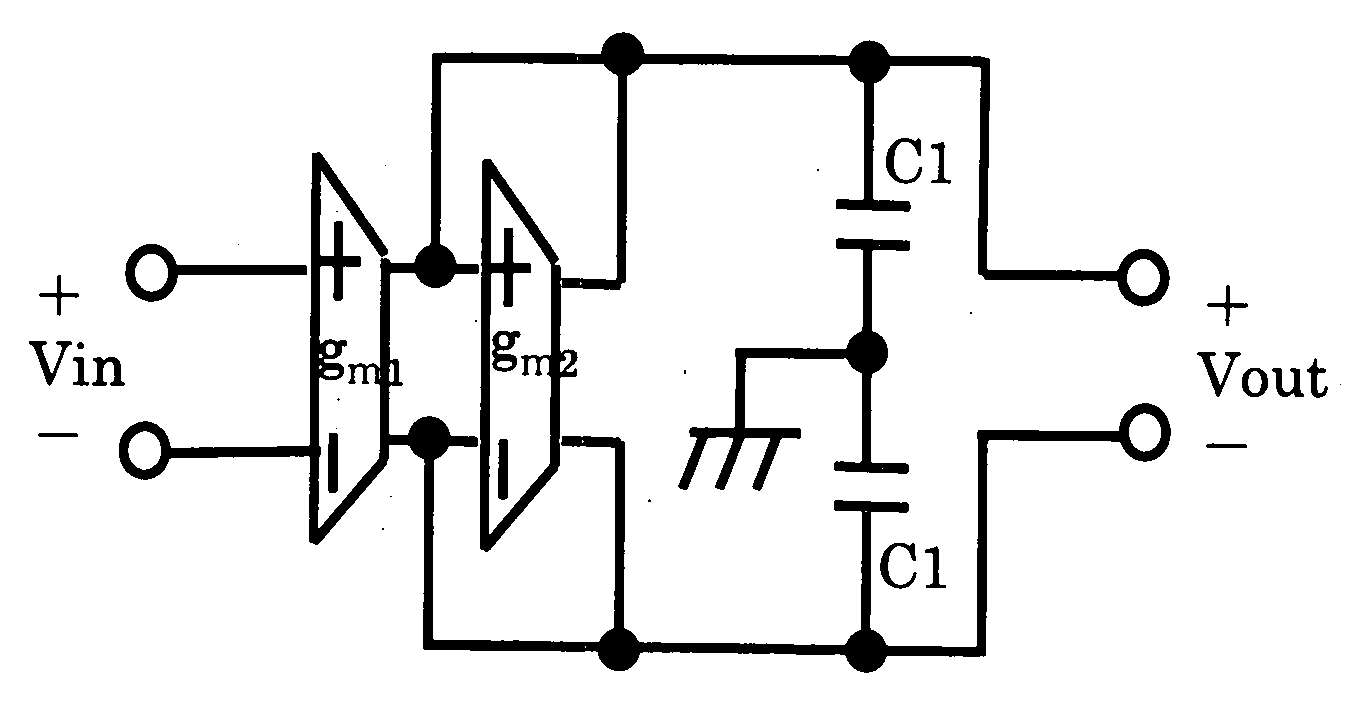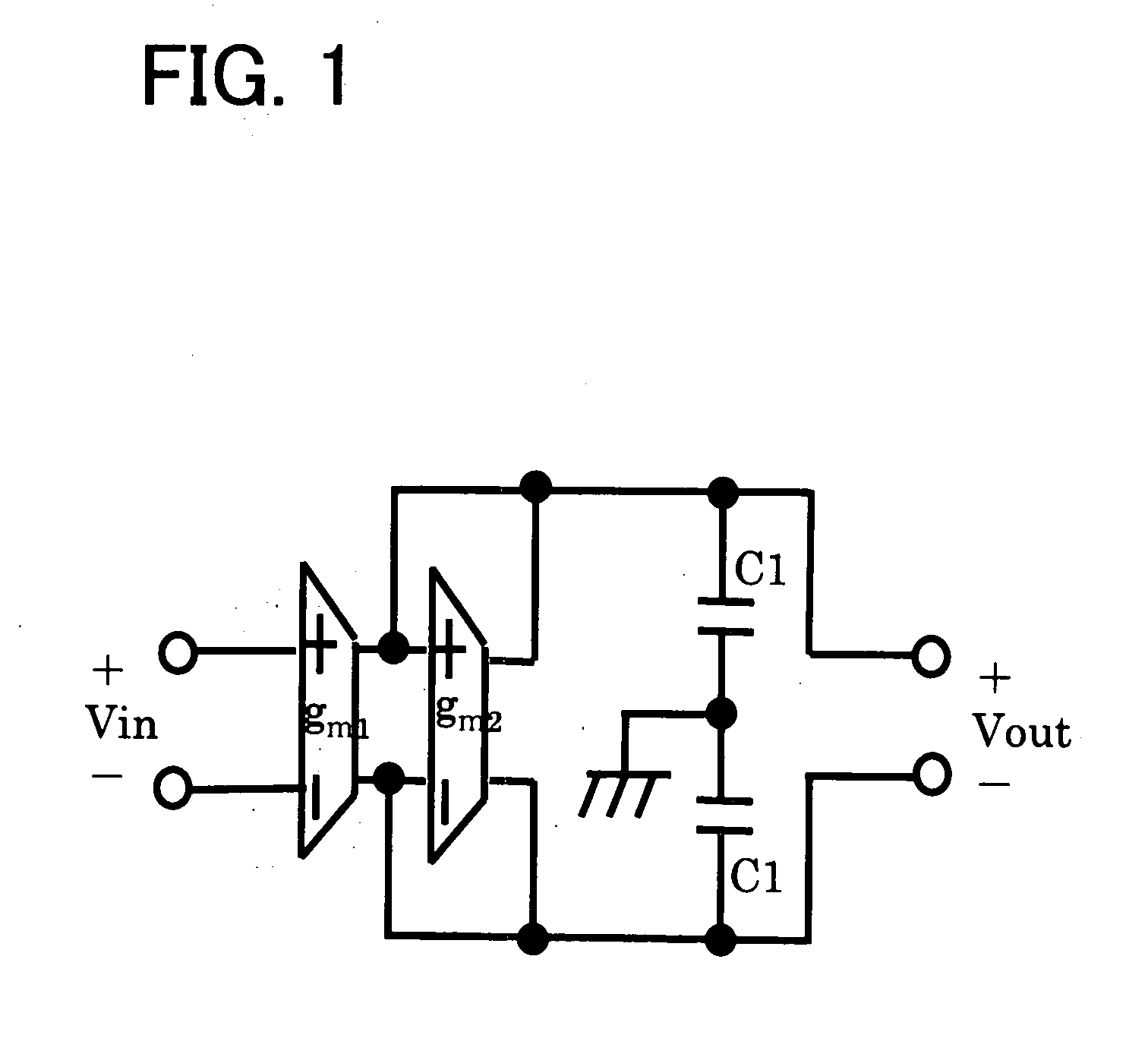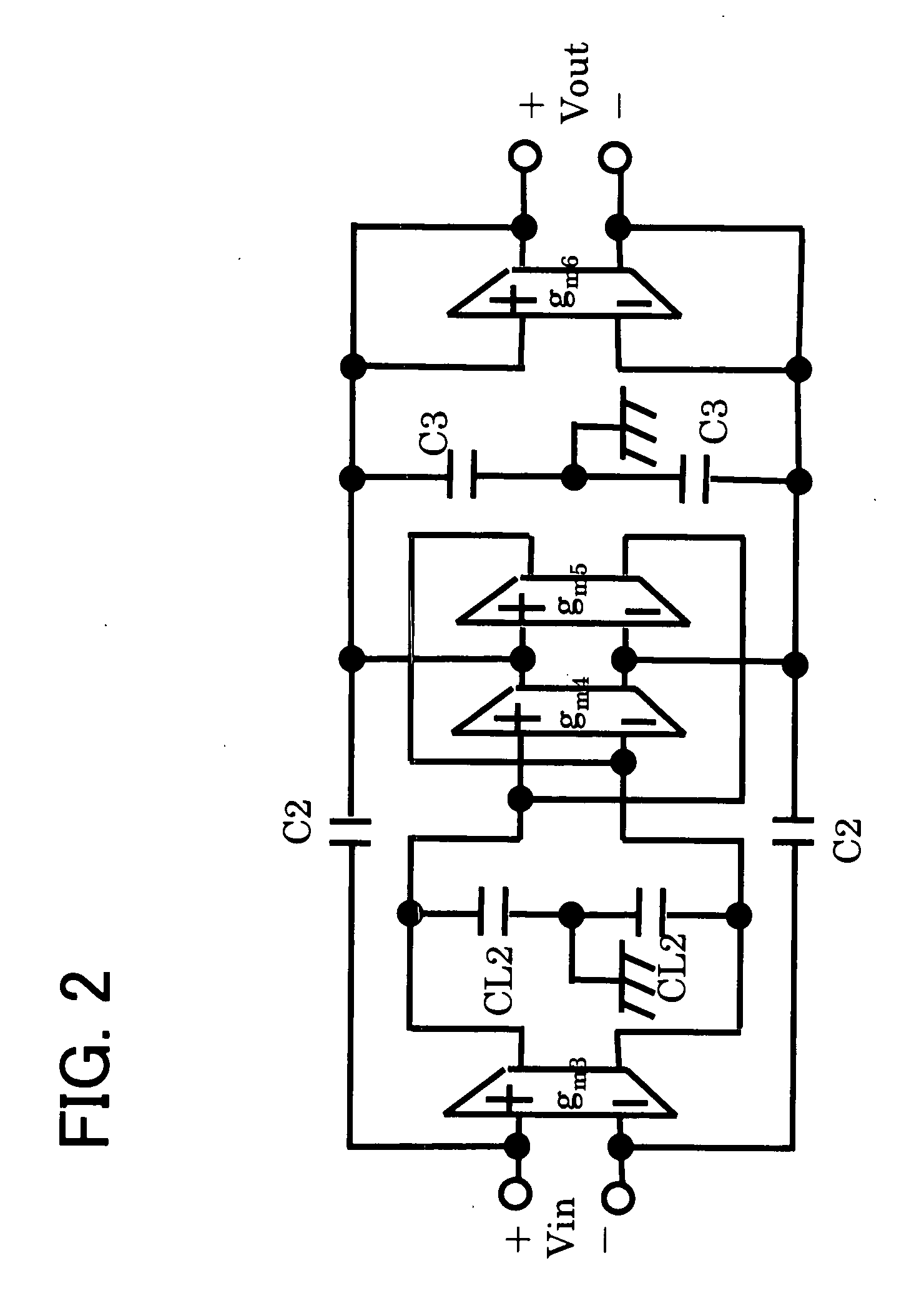Complex filter circuit
a filter circuit and complex technology, applied in the field of filter circuits, can solve the problems of circuit elements increasing in number and chip size, difficult to maintain flat characteristic in the passband, and increasing the number of circuit elements, so as to reduce the order of filter in the present invention, reduce current consumption, and reduce chip area
- Summary
- Abstract
- Description
- Claims
- Application Information
AI Technical Summary
Benefits of technology
Problems solved by technology
Method used
Image
Examples
first embodiment
[0203]In a gm-C filter, capacitance C is transformed to inductance L using a gyrator, and an LCR filter is transformed to an OTA-C filter, namely a so-called gm-C filter. However, in the case of a floating L, four OTAs and one capacitor become necessary, the number of elements is large and it is difficult to reduce circuit current.
[0204]If the above-described biquad method is used, this portion can be eliminated and four OTAs are required per second-order filter. Accordingly, this problem is particularly serious in a complex filter in which LPFs are required in the two channels of I and Q.
[0205]If the elliptic RLC ladder LPF shown in FIG. 16 is transformed to a complex filter, the result will be as shown in FIG. 4.
[0206]Admittance YC2 of a series branch (L2, −jR2, C2, −jG2) of the complex third-order elliptic filter shown in FIG. 4 is as follows:
YC2(s)=1sL2-jR2+sC2-jG2=s2L2C2-js(R2C2+L2G2)+1-R2G2sL2-jR2(70)
[0207]If an admittance equivalent to YC2(S) can be implemented solely by an i...
second embodiment
[0238]As illustrated in the first embodiment, the elliptic capacitor and the gm value of the coupler between the I and Q capacitors must take on fractional values of C2= 1 / 43, gm6=0.157, respectively.
[0239]For the purpose of simplifying the circuitry, it is necessary to consider eliminating the coupler of the elliptic capacitors between I, Q and also the elliptic capacitor.
[0240]The coupler of the elliptic capacitors between the I, Q capacitors operates in such a manner that the transmission zero point of the complex filter on the low-frequency side thereof will become a point on the negative (minus) side.
[0241]Further, the transmission zero point always appears on the side of low frequency owing to the admittance transformation.
[0242]It will be understood from FIG. 11 that if a frequency shift ω0 along the frequency axis can be set at will, then there will be no problem even if the transmission zero point of the complex filter on the low-frequency side thereof is zero frequency.
[02...
PUM
 Login to View More
Login to View More Abstract
Description
Claims
Application Information
 Login to View More
Login to View More - R&D
- Intellectual Property
- Life Sciences
- Materials
- Tech Scout
- Unparalleled Data Quality
- Higher Quality Content
- 60% Fewer Hallucinations
Browse by: Latest US Patents, China's latest patents, Technical Efficacy Thesaurus, Application Domain, Technology Topic, Popular Technical Reports.
© 2025 PatSnap. All rights reserved.Legal|Privacy policy|Modern Slavery Act Transparency Statement|Sitemap|About US| Contact US: help@patsnap.com



